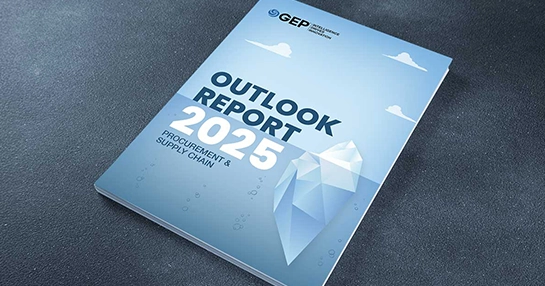
Where’s the Contract? How Procurement Can Address Contract Visibility Challenges
- Most companies can’t easily find or use their contract data.
- New AI tools are improving contract visibility, making it easier to track and manage contracts.
- Better contract visibility helps procurement save money, reduce risks and adapt quickly.
June 19, 2025 | Procurement Strategy 4 minutes read
Your team just closed a major deal after months of talks. The contract is signed and filed away as everyone moves to the next project.
Six months later, your CFO asks about the promised savings. But you can't quickly check if the supplier is following the terms you negotiated.
Meanwhile, three contracts renew automatically without notice, and an outdated clause creates an unexpected legal problem.
Sound familiar?
Why Contract Visibility Matters
Contracts control everything in procurement: pricing, delivery terms, quality standards and legal obligations. Yet for many companies, these vital documents vanish once signed. They get lost in shared drives, scattered spreadsheets or isolated systems.
A signed contract should help you ensure compliance, manage risks and unlock value. Yet most teams struggle with basic questions like:
- When do our agreements expire?
- Are we using the latest terms we negotiated?
- Are suppliers meeting their contract obligations?
- Which contracts have renewal options we should use?
Poor contract visibility leads to maverick spend, missed savings, late deliveries and compliance problems. What’s more, companies with low visibility tend to react to problems rather than prevent them.
Talk to Our Expert
Transform Static Documents Into Strategic Assets
Contract visibility improves performance by turning static documents into actionable intelligence. Here’s what leading firms are doing to build that visibility:
• Centralize for control and compliance
Centralization makes isolated information more readily available. When all stakeholders have access to an up-to-date contract repository, they can verify terms, track obligations and ensure consistent language across agreements.
A structured, centralized approach makes contracts searchable, version-controlled and linked to performance metrics.
• Connect contracts to performance
Better visibility lets companies evaluate suppliers on metrics beyond price, such as delivery reliability, quality, risk and ESG compliance.
When procurement ties contract terms to key performance indicators and monitors them consistently, supplier performance improves. Are vendors delivering what they promised? Are SLAs being met? Without visibility, these answers remain hidden in filing cabinets or disconnected systems.
• Align contracts with actual spend
The work that procurement does to negotiate a great deal means nothing if buyers are still making off-contract purchases. Integrating contracts with procurement systems , especially purchasing workflows, allows you to match spend directly to negotiated terms. This makes it easier to track savings and spot leakage.
How Technology Is Changing the Game
New tools are turning contract management from a hassle into a strategic advantage. Four key innovations are leading this shift:
1. AI-Powered Contract Lifecycle Management tools automatically extract key clauses, flag unusual terms and suggest optimal language. This cuts manual review time and helps identify hidden risks.
2. Chatbot-Driven Contract Search can be performed across a source-to-pay platform using AI-powered chatbots. These chatbots let users efficiently find and re-trieve contract data like clauses and obligations.
3. Natural Language Processing can spot deviations from standard templates and benchmark clauses against policy libraries. By doing so, it enables smarter contract comparison and risk assessment.
4. Integrated Procurement Platforms now connect contract management to core workflows, including sourcing, purchasing and supplier performance.
These advances create real-time visibility across the full procurement lifecycle, breaking down information silos and enabling faster, more informed decisions.
Strategic Agility in Uncertain Times
Today's supply chains face unprecedented volatility, from geopolitical shocks to sustainability demands. Contract visibility helps organizations pivot quickly when circumstances change.
When disruptions hit, teams with strong contract visibility can:
- Quickly identify affected suppliers and contracts
- Renegotiate terms based on current market conditions
- Activate backup suppliers with existing agreements
- Adjust service levels or pricing without administrative delays
This agility is impossible when contracts are scattered or inaccessible. Visibility through a unified platform ensures procurement can adapt quickly while maintaining compliance.
Meeting Sustainability Goals
Contract visibility is also now essential for ESG (Environmental, Social, Governance) and ethical sourcing. As pressure grows to report on carbon footprints, labor practices and diversity efforts, contract language must reflect these commitments, with verifiable performance.
Modern contract visibility systems help you monitor supplier compliance with sustainability requirements, track diversity spend commitments and demonstrate regulatory compliance across complex global supply chains.
From Document Management to Strategic Advantage
Procurement teams that treat contracts as static, archived documents are missing a big opportunity. With strategic visibility, contracts can deliver:
- Proactive compliance and strengthened governance
- Realized cost savings and quantifiable risk reduction
- Enhanced supplier performance and ESG commitment tracking
- Data-driven insights that improve future negotiations
Leading procurement teams use contract visibility to streamline risk management and gain competitive advantage. In an era where agility and intelligence define procurement excellence, bringing contracts out of the shadows is essential.
FAQs
What is Contract Visibility?
Contract visibility means having easy access to key contract details—such as terms, obligations, and milestones—across your organization in one centralized location.
What Features Should You Look for in Contract Visibility Software?
Some best practices for optimizing contract visibility include centralizing all contracts in a searchable repository, setting automated alerts for key dates, and ensuring teams across legal, procurement and finance have the right level of access.
Some Best Practices for Contract Visibility?
Some best practices for optimizing contract visibility include centralizing all contracts in a searchable repository, setting automated alerts for key dates, and ensuring teams across legal, procurement and finance have the right level of access.



